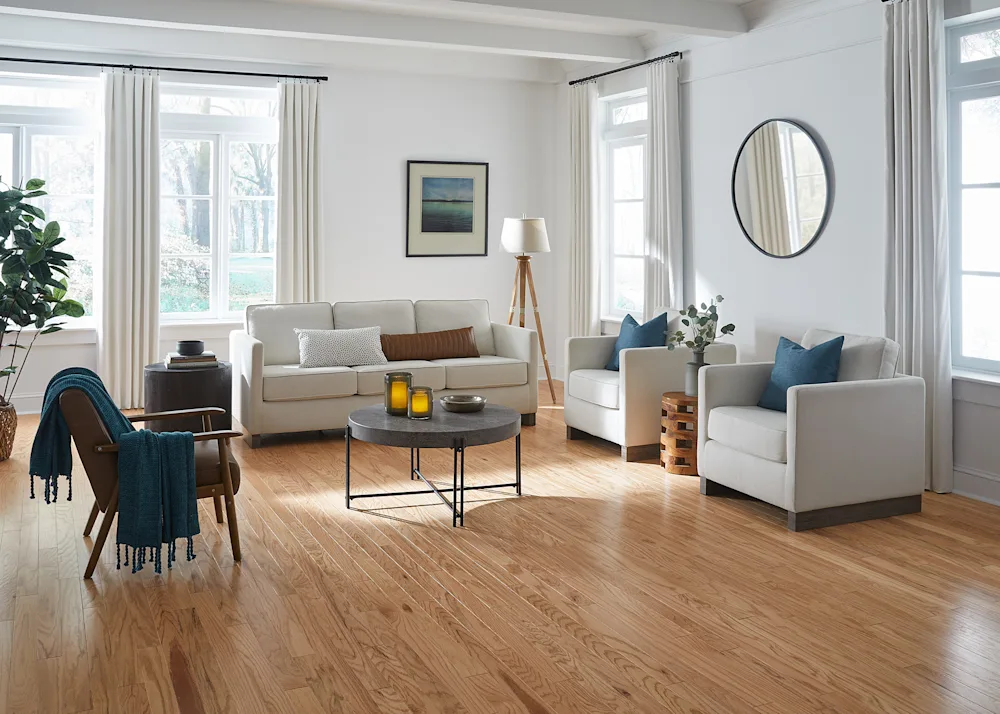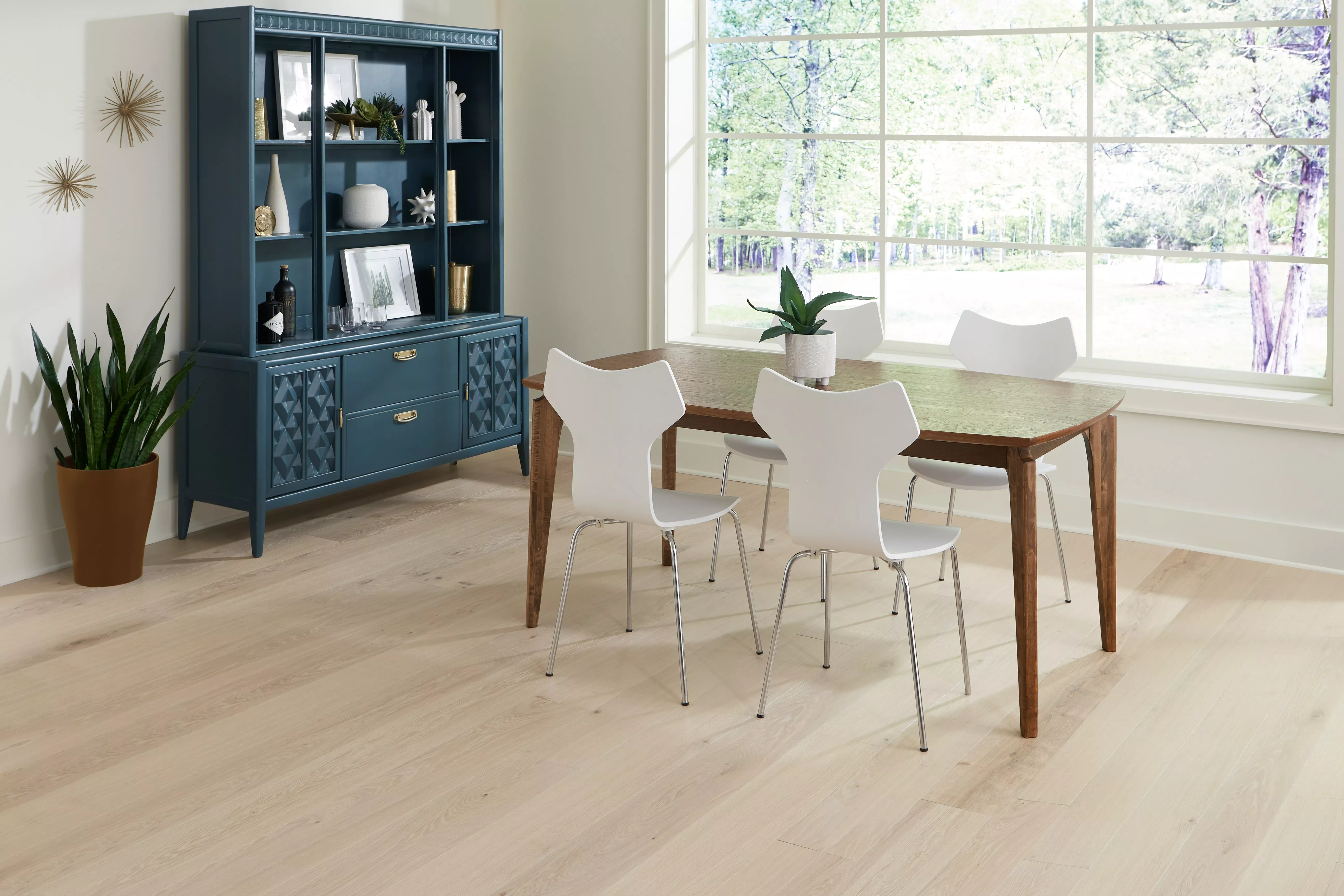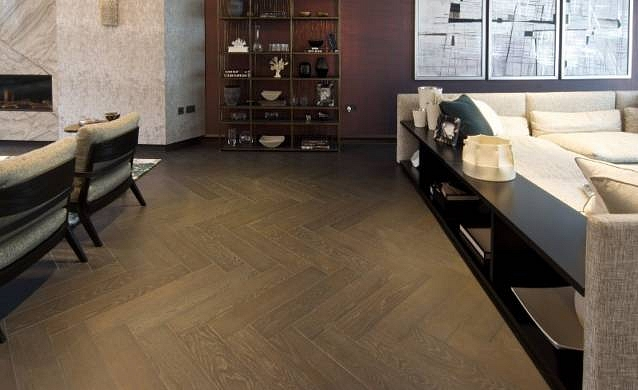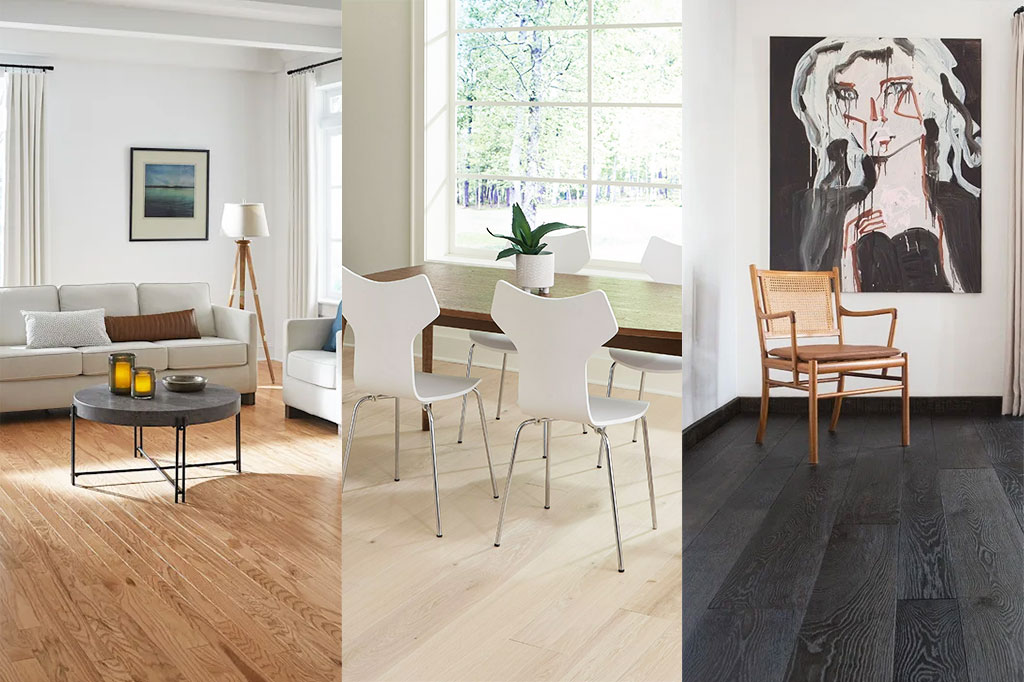When choosing engineered wood flooring, comparing popular oak species—Red Oak, White Oak, and Black Oak—is essential. Each species provides distinct traits that significantly impact the atmosphere and practicality of a space. Oak flooring is valued for its durability, beauty, and timeless appeal in both home and commercial settings.
Table of Contents
ToggleOak Background
Red Oak (Quercus rubra): This is common across the eastern U.S. and Canada, growing rapidly to 80-100 feet. It features distinctive reddish-brown, coarse, highly porous wood.

White Oak (Quercus alba): Is found across the eastern U.S. and can grow to heights of 80-100 feet. It features a light to medium brown, olive-toned, less porous wood, with excellent rot resistance, ideal for outdoor uses and boat building.

Black Oak (Quercus velutina): Grows in the eastern and midwestern U.S., reaching up to 80 feet. It features dark yellowish-brown heartwood, rough bark, and deep furrows.

What are the differences between Red Oak, White Oak, and Black Oak Flooring?
Characteristic | Red Oak | White Oak | Black Oak |
Color | Light to medium reddish-brown | Light to medium brown, can have a slightly grayish hue | Dark brown, often with a deeper, more intense tone |
Grain Pattern | Coarse, with prominent and varied grain patterns | Tighter and more uniform grain; less busy than Red Oak | Similar to Red Oak but can appear darker and more pronounced |
Hardness | 1290 (Janka hardness scale) | 1360 (Janka hardness scale) | Similar to Red Oak, around 1220 to 1290 Janka scale |
Durability | Good resistance to wear and denting | Better resistance to moisture and wear than Red Oak | Good, but may not be as resistant to moisture as White Oak |
Cost | Generally less expensive than White Oak | Slightly more expensive due to its higher durability | Varies, often similar to Red Oak depending on availability |
Workability | Easy to sand, stain, and finish | Slightly harder to work than Red Oak but holds finish well | Similar workability to Red Oak, takes stain well |
Common Uses | Flooring, furniture, cabinetry | Boat building, flooring, outdoor furniture due to better moisture resistance | Flooring, architectural millwork, and furniture |
Color:
Red Oak engineered wood flooring typically boasts a reddish-brown hue that varies in intensity. White Oak displays a light to medium brown shade, frequently accompanied by a subtle grayish tint. Black Oak stands out with its darker brown shade, occasionally hinting at chocolate or black undertones.
Grain Pattern:
Red Oak typically features a pronounced, open grain pattern, often considered “coarse.” In contrast, White Oak exhibits a tighter, more uniform grain, usually straight but occasionally wavy or irregular. Black Oak is distinguished by its deep, swirling grain pattern, which can be striking in appearance.
Hardness:
On the Janka scale, Red Oak scores 1290, suitable for residential use. White Oak is harder at 1360, offering better resistance to dents and scratches. Black Oak’s hardness matches Red Oak, balancing durability with ease of installation.
Durability:
Red Oak is wear-resistant and suitable for most homes. White Oak, more durable and moisture-resistant, is ideal for high-wear or humid areas. Black Oak is durable but less moisture-resistant than White Oak, yet performs well under typical conditions.
Cost:
Red Oak is typically the most affordable, and appealing to budget-conscious buyers. White Oak is pricier due to its durability and high demand. Black Oak’s cost varies, often similar to Red Oak, depending on market availability and factors.
Workability:
Red Oak is easily sanded, stained, and finished, offering versatility for interior designs. White Oak, though harder to work, holds finishes excellently, supporting high-quality craftsmanship. Black Oak, similar in workability to Red Oak, provides diverse staining and finishing options for varied design needs.
Common Uses:
Red Oak engineered hardwood flooring is popular in homes for its aesthetic and durability. White Oak, with its superior moisture resistance, suits high-traffic areas and demanding applications like boat building. Black Oak, chosen for its distinctive dark color, is ideal for engineered flooring that requires a striking appearance.
conclusion
The choice between these oaks will depend on the specific needs of the space, including considerations like traffic levels, exposure to moisture, and desired aesthetics. Each wood type brings its strengths to a project, allowing designers to tailor their choices to best suit the environment and usage requirements.

